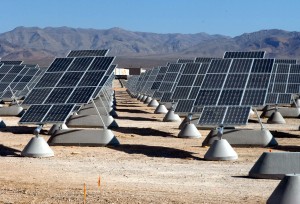India, under Prime Minister Narenda Modi, is making renewable energy a priority for the future. Modi’s latest investment in the renewable energy industry is part of a $20 billion joint venture between Foxconn Technology, Softbank and Bharti Enterprises to make renewable energy a reality in the impoverished country.
Before the proposal to increase output was accepted by India’s cabinet, the target for solar capacity by 2022 was 20 gigawatts. The new, more aggressive timeline, has pushed the target to 100 gigawatts by 2022. This means India will have have to add more solar energy capacity than the United States has in recent years.
However, many look at India with skepticism and don’t believe they will be able to meet their goals. Even with the the heightened enthusiasm in renewable energy, India installed only about a third of the annual capacity needed to hit their 2022 goal in the last year and a half. However, because of eased legal restrictions and increased financing many believe the ambitious timeline is feasible.
The joint venture in Indian solar power requires a lot of foreign investment and the plan and timeline are not yet complete. U.S. and Chinese companies alike are committing to investments in renewables for the country.
In an effort to achieve their goals, India has allowed for investments to be made entirely by companies outside of India specifically for renewable energy. Regardless, most companies prefer partnering with Indian companies to help navigate the country’s political and legal landscape.
This endeavor will make India into one of the top countries for renewable energy. And it is coming at an important time. People are coming out of poverty and India’s economy is growing quickly and demand for energy is growing with it. With foreign investment and Modi’s commitment, an India on renewable energy is becoming a reality.

